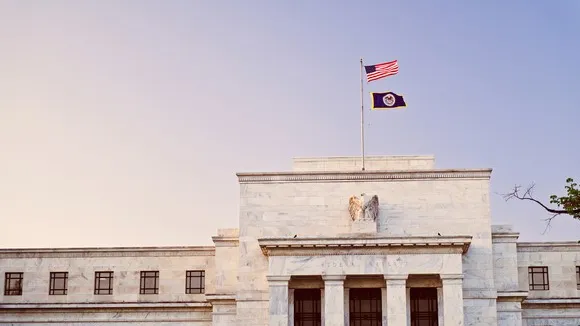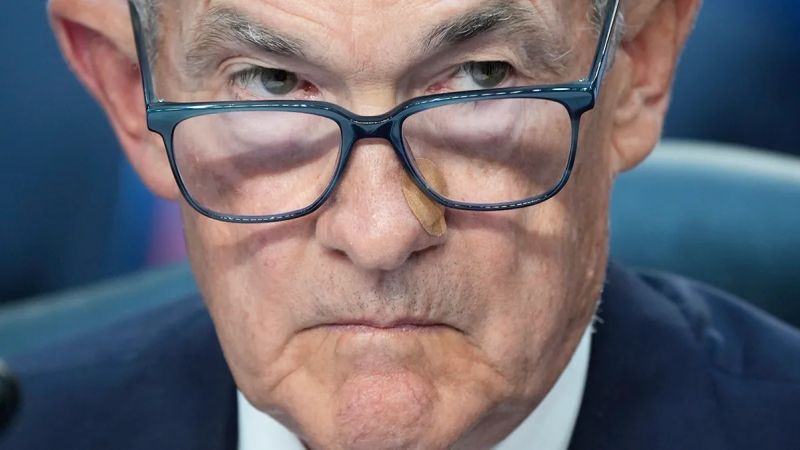Fed rate cuts are coming. But will they be big or small? It's a gamble
Big or small?
Will the Federal Reserve lower its key interest rate by a typical quarter percentage point this week or an outsized half-point?
The difference between the two possible approaches to the first Fed rate cut since 2020 may sound trivial. After all, Fed officials are expected to launch a flurry of rate reductions now that inflation and job growth are both slowing notably, likely juicing the economy and stocks. As a result, a small decrease could be followed by larger ones in the next few months, and vice versa.
But the Fed’s decision at the end of a two-day meeting Wednesday could move stock and bond markets and reveal whether officials are more concerned about stamping out inflation’s final embers or propping up a labor market that has been cooling a bit too rapidly for most economists’ comfort.

Why would the Fed decrease interest rates?
The central bank reduces interest rates to trim consumer and business borrowing costs, jolting a weak economy or propelling it from recession. It raises rates – or keeps them higher for longer – to dampen growth and bring down inflation.
Maximize your savings: Best high-yield savings accounts
With most Fed moves well telegraphed ahead of meetings, uncertainty about its action this week provides some rare drama.
“It is a coin toss,” said Nationwide Chief Economist Kathy Bostjancic.
What is the state of the job market?
For many Fed officials, a weakening labor market has emerged as a bigger worry than price increases that have slowed steadily in recent months. But the job market is far from unraveling, the economy has been resilient and Fed officials have been wary of declaring victory over inflation too soon after previous disappointments.
Recent data suggests “the labor market is continuing to soften but not deteriorate, and this judgment is important to our upcoming decision on monetary policy,” Fed Governor Christopher Waller said in a speech earlier in September. If the job market does erode significantly, the Fed “can act quickly and forcefully to adjust monetary policy.”
Yet noting the Fed’s key rate is historically high, several former Fed policymakers recently told the Wall Street Journal they favored a bigger rate cut. Futures markets, in turn, see a more than 65% chance of a half-point move.
Here are several reasons the Fed could cut its key rate by a modest quarter-point:
Layoffs are still low
Although the unemployment rate has risen sharply – from 3.7% in January to a still-low 4.2% in August – it’s mostly because of a surge of immigrants into the workforce rather than widespread layoffs, Goldman Sachs and Barclays wrote in notes to clients in recent days. While many of the newly arrived immigrants have yet to find jobs, that’s far less worrisome than a toxic cycle of layoffs that dampens consumer spending, leading to more layoffs. Both research firms expect a quarter-point cut.
There's no economic crisis
Larger rate cuts of more than a quarter point historically have been reserved for crises, Goldman Sachs said, such as the Great Recession of 2007-09 and the COVID-19-induced downturn of 2020. There is no such turmoil now.
The stock market is booming
Financial conditions are favorable to consumers and businesses, Goldman says. The stock market is near a record high and long-term interest rates have come off the 16-year highs reached last year, tamping down borrowing costs. That helps offset the effect of the Fed’s high short-term rates on economic activity. Futures markets expect the Fed to lower rates by a total of 1.25 percentage points this year. The Fed could counter a measured rate cut Wednesday with forecasts of sharper reductions in the next few months.
A key inflation measure picked up
Although inflation overall eased in August, a core measure that excludes volatile food and energy items unexpectedly accelerated as rent and other services costs advanced, according to the consumer price index. The message: Inflation hasn’t been vanquished yet.
The economy is on solid footing
The economy overall, especially consumer spending, “remains very resilient, showing little sign of losing steam,” Barclays said. The economy grew at a healthy 3% annual rate in the second quarter. It's on track for a solid 2.3% gain in the current quarter, according to S&P Global Market Intelligence.
A big cut could rattle markets
Fed officials have said they prefer to lower interest rates gradually, allowing them to assess the impact on the economy. A larger Fed rate cut could “send a message of panic” and “spook the markets,” Dan North, senior economist at Allianz Trade North America told MarketWatch this week.
It's an election year
Slashing rates by a half-percentage point just before the presidential election could be viewed as bolstering the economy and thus aiding Vice President Kamala Harris, the Democratic nominee, said economist Michael Feroli of JPMorgan Chase. Yet Feroli also noted Powell has said politics plays no role in Fed decisions.
"We believe Powell," he said.

Here are reasons the Fed could go big and cut rates by half a percentage point:
The job market is softening
Job growth has slowed dramatically to an average monthly pace of 116,000 from June through August, down from 211,000 the previous three months. Although Hurricane Beryl doused payroll gains in July, August should have brought a larger rebound.
Meanwhile, job openings have fallen to the lowest level since January 2021 and hiring has slowed to a pace last seen in early 2018. Although layoffs have remained low, a rising unemployment rate and weak hiring means it’s taking longer for jobless workers to find positions. That could cause them to cut back their spending, leading businesses to further pull back hiring or increase layoffs, says economist Nancy Vanden Houten of Oxford Economics.
Such a scenario could jeopardize the Fed's mission to achieve the rare feat of subduing inflation without tipping the economy into a recession.
Inflation has fallen close to the Fed's target
By contrast, the Fed’s preferred annual inflation measure was 2.6% last month, down from 5.6% in mid-2022 and not far above its 2% goal. In other words, inflation is no longer the Fed’s biggest concern and officials should focus on the flagging labor market, Bostjancic says.
The Fed's key rate is too high
After sharp rate hikes in 2022 and 2023 to fight inflation, the Fed’s benchmark rate remains at a 23-year high of 5.25% to 5.5%. Since Powell has described the risks to its mandates of stable prices and maximum employment as balanced, the benchmark rate ideally should be at a “neutral” level believed to be just under 4%, Bostjancic says. That’s a rate that would neither stimulate nor slow the economy.
“I think (the drop-off in the job market) is not consistent with the policy rate being so restrictive,” Bostjancic says.
If the Fed were to lower rates by a quarter point each meeting, “it takes almost a year” to arrive at the neutral rate, Feroli wrote in a note to clients. That argues for “front-loading” rate cuts, he said.
Jittery stock and bond markets
Since futures markets now expect more than a percentage point of cuts this year, Bostjancic disagrees that a half-point move would spook investors. Instead, she thinks a quarter-point cut would roil stock and bond markets, possibly jarring the economy and labor market.
“Bond markets could have a tantrum,” she said.
Disclaimer: The copyright of this article belongs to the original author. Reposting this article is solely for the purpose of information dissemination and does not constitute any investment advice. If there is any infringement, please contact us immediately. We will make corrections or deletions as necessary. Thank you.







